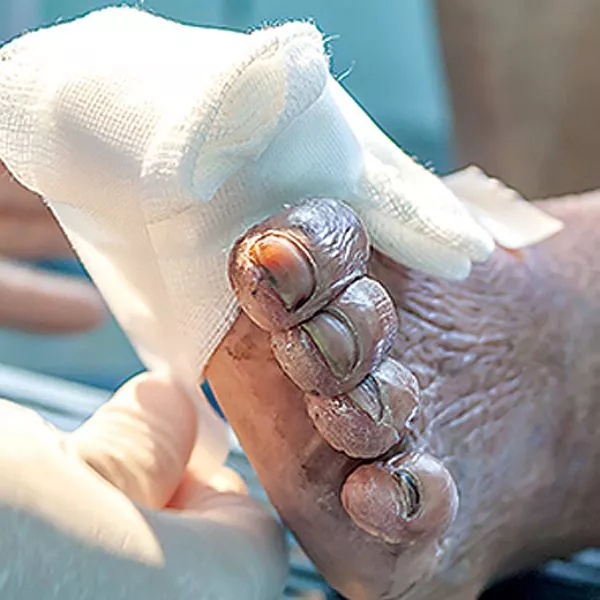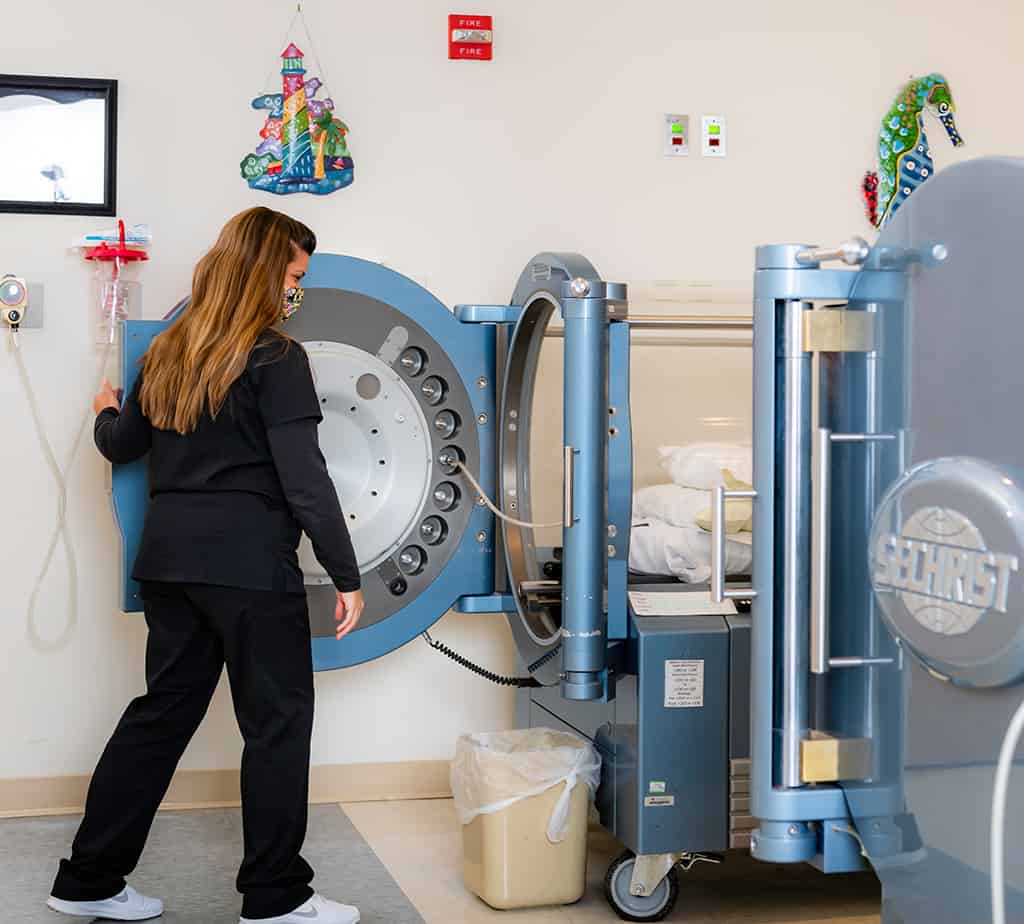Necrotizing Soft Tissue Infections
Hyperbaric Oxygen Therapy (HBOT) for Necrotizing Soft Tissue Infections | Fayetteville, NC

Necrotizing Soft Tissue Infections
A number of types of infections of soft tissue may benefit from adjunct treatment with hyperbaric oxygen and are included in the category of “necrotizing soft tissue infections.” Names of such clinical syndromes include crepitant anaerobic cellulitis, progressive bacterial gangrene, necrotizing fasciitis, and nonclostridial myonecrosis. Gas gangrene (clostridial myositis and myonecrosis) is a separate entity. Necrotizing soft tissue infections themselves may induce conditions adverse to control of the infection by normal host defense mechanisms.
The infections commonly lower tissue oxygen levels, impairing the ability of the white blood cells (neutrophils) to fight infection. Toxins produced by bacteria involved may also inhibit neutrophil activity. The primary treatments for necrotizing soft tissue infection are surgical excision of infected tissue and administration of appropriate antibiotics. Hyperbaric oxygen may be beneficial in several ways. Some of the bacteria involved in necrotizing soft tissue infections are “anaerobic,” growing most rapidly in a low oxygen environment. In the hyperbaric chamber, tissue oxygen levels may be raised sufficiently to inhibit bacterial growth. In addition, hyperbaric oxygen treatment may enhance the ability of neutrophils to kill bacteria, by a number of different mechanisms.
Research & Studies
- Should hyperbaric oxygen be added to treatment in idiopathic sudden sensorineural hearing loss?
- Hyperbaric oxygen as a method of therapy of sudden sensorineural hearing loss.
- Prognostic effect of hyperbaric oxygen therapy starting time for sudden sensorineural hearing loss
- Hyperbaric oxygen therapy in idiopathic sudden sensorineural hearing loss (ISSNHL) in association with combined treatment.


HBOT helps white blood cells kill bacteria, and help osteoclast clean up the dead and infected bone. Once the infection is under control and all the dead bone is gone, new bone is laid down by osteoclasts. These processes require high levels of oxygen to function optimally. HBOT also helps antibiotics work better, and in conjunction with some antibiotics, helps eradicate the biofilms that form in many of these cases.

INCREASES WHITE BLOOD
CELL EFFECTIVENESS

IMPROVES QUALITY
OF LIFE IN PATIENTS

STIMULATES RELEASE
OF STEM CELLS

MOST CONDITIONS
COVERED BY INSURANCE
COMMONLY, THESE PATIENTS WILL RECEIVE 40-60 TREATMENTS TO CLEAR THE INFECTION.
Does a Hyperbaric Treatment Take?
Hyperbaric Oxygen Therapy (HBOT) is a non-invasive medical treatment administered by delivering 100% oxygen at pressures greater than two to three times the normal atmospheric (sea level) pressure to a patient in a chamber. Most HBOT treatments generally take about 2 hours. Treatments for some indications can last up to 4 hours. Serious diving injuries can require a treatment for longer than 5 hours. The hyperbaric physician will determine how long each patient’s HBOT treatment will last.

